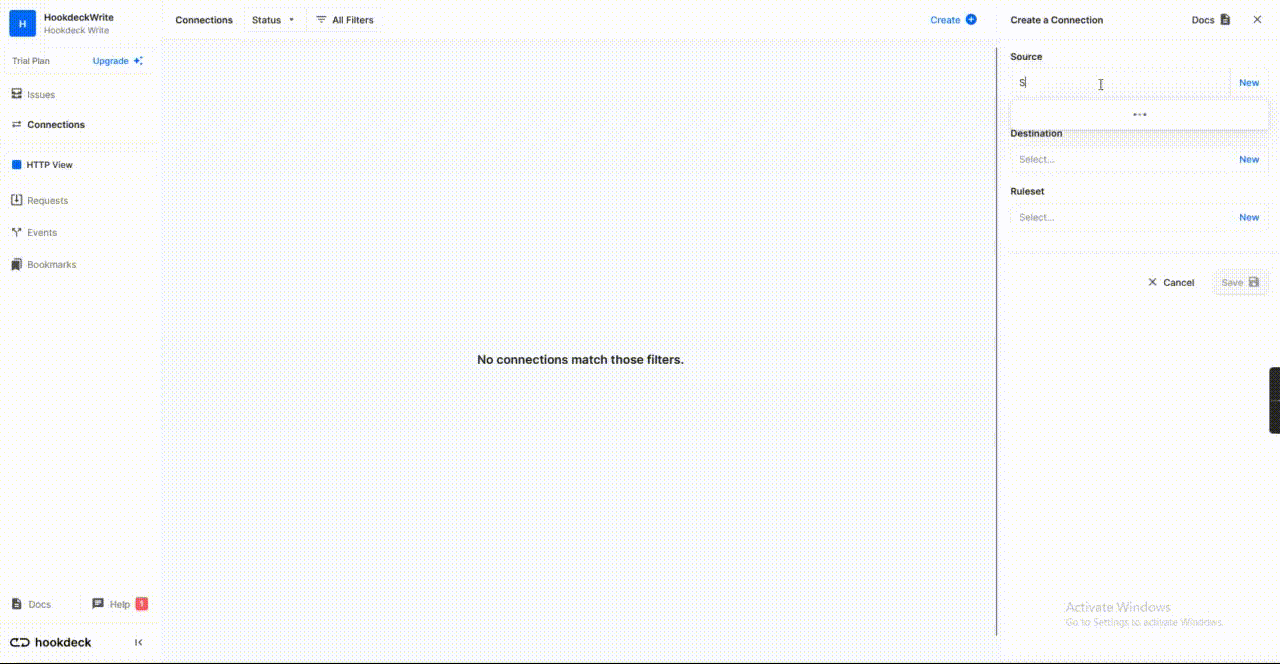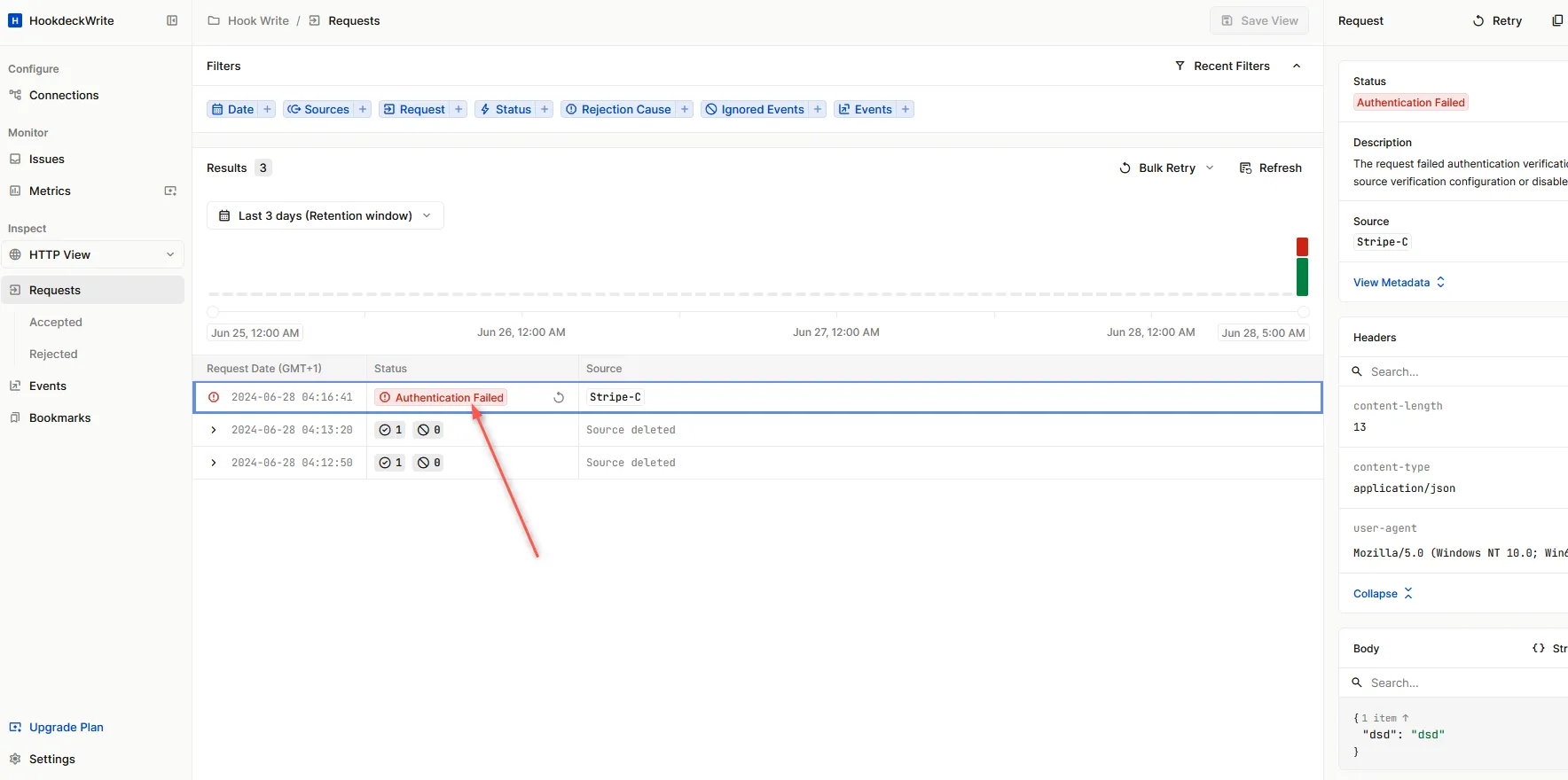How to Secure and Verify Stripe Webhooks with Hookdeck
Webhook security and verification are critical components in ensuring the security and integrity of your financial transactions. Stripe, a popular payment gateway, allows businesses to receive webhook notifications when specified events occur, such as successful payments or changes to customers’ actions or information. However, if these webhooks are not correctly secured, they can be vulnerable to security threats such as fraud, replay attacks, man-in-the-middle attacks, and unauthorized access. These vulnerabilities can lead to the compromise of your financial data. Learn more about webhook security in this Complete Guide to Webhook Security.
As a developer, dealing with each platform’s webhook security implementation often leads to maintenance issues, especially when managing multiple providers. Hookdeck simplifies this process by allowing you to manage all your webhook security and verification using Source authentication, requiring you to implement only Hookdeck’s signature verification on your server(s).
This article provides a step-by-step guide on how to set up and configure your Stripe webhooks manually and with Hookdeck. By the end of this article, you will have a comprehensive understanding of how Hookdeck can help secure your Stripe webhooks and protect your business from potential security threats.
How to manually secure Stripe webhooks
To manually secure your Stripe webhooks, you are required to perform the following steps:
- Obtain the endpoint secret from the Webhooks setting in your Stripe Dashboard.
- Extract the timestamp and signature from the
Stripe-Signatureheader by splitting the value using,followed by=ending up withtfor timestamp andv1for the signature. - Prepare the
signed_payloadstring by concatenating the timestamp as string with the character.and the JSON payload. - Determine the expected signature by computing the
HMACwithSHA256hash function using the endpoint's secret as the key and thesigned_payloadas the message. - Compare the received signature to the expected signature and verify their equality.
- Check the difference between the received timestamp and the current time and make sure it is within the tolerance limit.
- Use a constant-time string comparison to compare the signatures to protect against timing attacks.
Learn more about verifying Stripe webhook signatures.
Verifying Stripe webhooks manually using the steps provided offers a secure solution for event validation. However, it also presents several challenges and difficulties, including implementation difficulties, compatibility issues, performance constraints, maintenance requirements, and the possibility of errors throughout the validation process. These factors must be considered before implementing a manual verification method to ensure a smooth and secure process.
How to secure and verify Stripe webhooks with Hookdeck
To verify your Stripe webhook notifications webhook with Hookdeck:
- Create a Hookdeck connection with Stripe as the source and your application as the destination.
- Create or select an existing Stripe webhook you wish to secure.
- Retrieve the endpoint’s secret from the dashboard.
- Open the webhook source from your Hookdeck dashboard.
- Enable Source Authentication and select Stripe from the list of platforms.
- Fill in the Webhook Signing Secret as the secret gotten above.
- Click Save.
An Authenticated Stripe connection source is indicated by a shield icon.

Legitimate requests from Stripe are successfully received with a 200 status code, while any request without the signature is flagged with Authentication Failed. Hookdeck will not process the request further, and it will not reach your destination.

Hookdeck can be used to centralize your webhook security and verification, making it easy to implement only Hookdeck’s signature verification on your server. See the guide on Hookdeck Authentication.
Conclusion
In this article, we have discussed the importance of securing and verifying Stripe webhooks, the challenges associated with manual verification, and the ease of implementation with Hookdeck.
In conclusion, using Hookdeck, an event gateway provider that can be used to manage inbound webhooks, helps simplify and streamline the process of verifying Stripe webhooks, making it easier and more secure for developers to integrate quickly. By leveraging Hookdeck's automated verification process, you can be confident that you are accurately receiving and responding to Stripe webhook events without having to manually perform the time-consuming and complex steps involved in manual verification.
